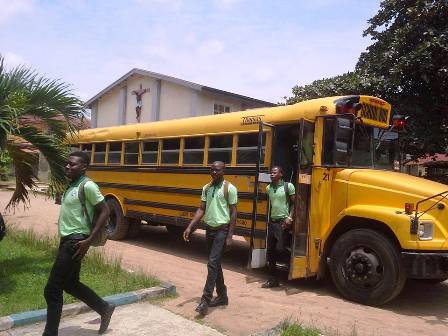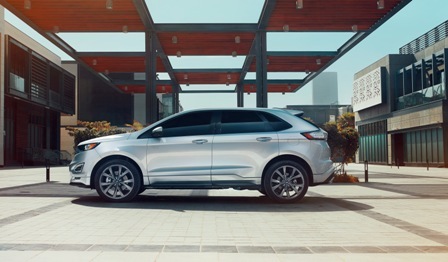As school holidays are at an end, and with the morning school run, which usually comes with added stress for parents of navigating bumper-to-bumper rush hour traffic, Ford offers some tips on how to make your journey smoother and safer.
 Buckle up: “Children are the most vulnerable of all road users,” says Eugene Herbert, Project coordinator of Driving Skills for Life (DSFL) South Africa – Ford’s responsible driver training programme. “As we start the New Year, parents must recommit to safe habits in the car. Make it a rule that you never start your car unless all children and adults have their safety belts on, and are sitting in the correct positions.”
Buckle up: “Children are the most vulnerable of all road users,” says Eugene Herbert, Project coordinator of Driving Skills for Life (DSFL) South Africa – Ford’s responsible driver training programme. “As we start the New Year, parents must recommit to safe habits in the car. Make it a rule that you never start your car unless all children and adults have their safety belts on, and are sitting in the correct positions.”
Get in the habit of leaving home a few minutes earlier, to allow yourself enough time to make sure your kids are strapped in before you start driving, and that school bags or other heavy items are packed in the boot. If harsh braking is required, unsecured items in the cabin become dangerous missiles, and rear-seat passengers who aren’t buckled in could injure other occupants when they are flung forward or to the side. If your vehicle is equipped with airbags, which provide additional impact protection in collisions, they probably won’t deploy if your seatbelt isn’t properly clipped in.
Once they reach the manufacturer’s weight limit on their safety seat, children under 12 or shorter than 1.5m should graduate to a booster seat, preferably in the rear, used with the vehicle’s built-in seatbelts. The lower part of the seatbelt should go across your child’s pelvis, not their stomach. The shoulder belt should sit on their chest and collarbone, and not touch their face or neck. And it should never be put behind your child’s back, or under their arm.
Back off: While it may seem like an inconvenience, the fact is you have to share the road with other vehicles, including taxis and buses. Remember that they, too, are transporting precious cargo – somebody else’s kids.
Running late for school causes you to drive faster than you normally would, and often results in tailgating and weaving through traffic to make up for lost time. If you can’t see the mirrors of the vehicle in front of you, that driver can’t see you. A longer following distance increases your line of sight, which gives you more opportunities to spot and avoid potential problems. A following distance of three seconds is considered safe on dry roads.
Drop-off points can often be chaotic. Children may not always pay attention to the traffic dangers around them when disembarking, and crossing roads. Even parking lots, with their very low speed limits, are high-risk sites for accidents, because kids, being small in stature, are more difficult to see between parked vehicles. If a child pops out from behind a vehicle without warning, or misjudges the distance between themselves and your vehicle, and darts in front of you, you may need to brake or swerve suddenly. By adhering to the speed limit, you allow yourself more time to react, and take evasive action.
Be present: Ford can’t force you to kick bad habits and prevent you from falling prey to common distractions behind the wheel, like checking your cellphone, adjusting the radio, rubbernecking when passing crash scenes or roadblocks, applying makeup or shaving, looking for dropped items, and eating or drinking. But it can help you keep your eyes on the road while your kids are kept entertained, by streaming their favourite music through the SYNC 3 infotainment system. And additional safety features, like Forward Collision Warning with Brake Assist, will add to your peace of mind. Using sensors to detect slower-moving vehicles travelling in the same direction, it warns if you’re approaching rapidly, and pre-charges your brakes to increase sensitivity if you don’t react to the audible and visual warnings.
If you have to rely on a privately contracted children’s transportation service for your kids, Herbert advises that you choose “trustworthy and properly trained transporters, where your child has their own seat, and safety belt. Teach your child that they do not have to get in a car where they feel unsafe, and what they should do instead. If your child walks home, go over how to stay safe on the roads, and encourage them to be cautious at all times.”





